Reports
Abadeh is Marivan (Revised and Updated): A Key Iranian Former Secret Nuclear Weapons Development Test Site
by David Albright, Sarah Burkhard, and Frank Pabian
November 18, 2020
The Institute recently received new information and feedback, warranting a major revision to our report, “Abadeh is Marivan,” first published on August 28, 2020. The Abadeh site is the Amad Plan’s Marivan site, an important test site responsible for conducting large-scale high explosive tests for developing nuclear weapons under the Amad Plan, Iran’s effort during the early 2000s to build five nuclear weapons, subsequently reoriented to a smaller, better camouflaged nuclear weapons effort. The new information allowed the Institute to locate with high certainty Marivan’s outdoor test site, located about 1.5 kilometers northeast from the support site (see Figure 1). Although the logistical support site was razed in July 2019, the outdoor test site appears to have remained largely intact. Recent satellite imagery acquired and analyzed by the Institute shows that the outdoor site features two bunkers and a test ramp.
This test site is the location of Iran’s large outdoor high explosives tests as part of developing nuclear weapons under the Amad Plan. A further revision to the original report concerns the interpretation of a Farsi-language slide set from the archive obtained by the Institute in August. This slide set contains ground photos showing a large-scale nuclear weapons-related test conducted at the Marivan high explosive test site. The new interpretation, also consistent with the statements of the International Atomic Energy Agency (IAEA), is that this experiment aimed to test the survivability of neutron detectors. These detectors would play a central role during Iran’s planned cold test of a nuclear explosive, typically one of the last tests performed prior to building nuclear weapons. The new information led the Institute to revise its previous attempted geo-location correlation of the available ground photographs, making possible more definitive correlations and identifications with newly available satellite imagery. The new information also means that Iran was closer in time to conducting a cold test than estimated in the earlier version of the report.
After resisting for months, Iran allowed the IAEA to visit Marivan and another undeclared site, the former Tehran pilot uranium conversion plant. 1, 2 During their visits, the inspectors took environmental samples. It is once again worth noting the usefulness and importance of the Nuclear Archive in identifying Iran’s undeclared nuclear sites, materials, and activities. Acceptance of the IAEA visits reveals Iran’s increasing inability to deny the authenticity and legitimacy of the information in the Nuclear Archive. Nonetheless, Iran granting access to the two sites is just the beginning. It remains unclear if the visits and follow-up will resolve the outstanding questions that the IAEA has related to safeguards in Iran and, in particular, to the broader issue of access to military sites, Iran’s lack of a complete safeguards declaration, and the inability to ensure that the nuclear weapons-related activities conducted at Marivan are not continuing elsewhere.
The IAEA so far has not issued an update about its visits to Marivan or the Tehran plant, and the most recent IAEA Iran verification and monitoring report did not include any information about its visit to these locations. But according to the most recent IAEA Iran verification report, Iran’s responses to the IAEA’s findings from environmental sampling at another, related, undeclared materials and equipment storage site at Turquz Abad were unsatisfactory, calling Iran’s responses “not technically credible.” 3 Iran’s obfuscation has to raise concern about obtaining a positive outcome to the issues surrounding the Marivan site and the Tehran plant. Nonetheless, the sites warrant continued monitoring and IAEA visits. Satellite imagery of Marivan appears to show excavation at one of the bunkers at the outdoor site soon after the IAEA visit.
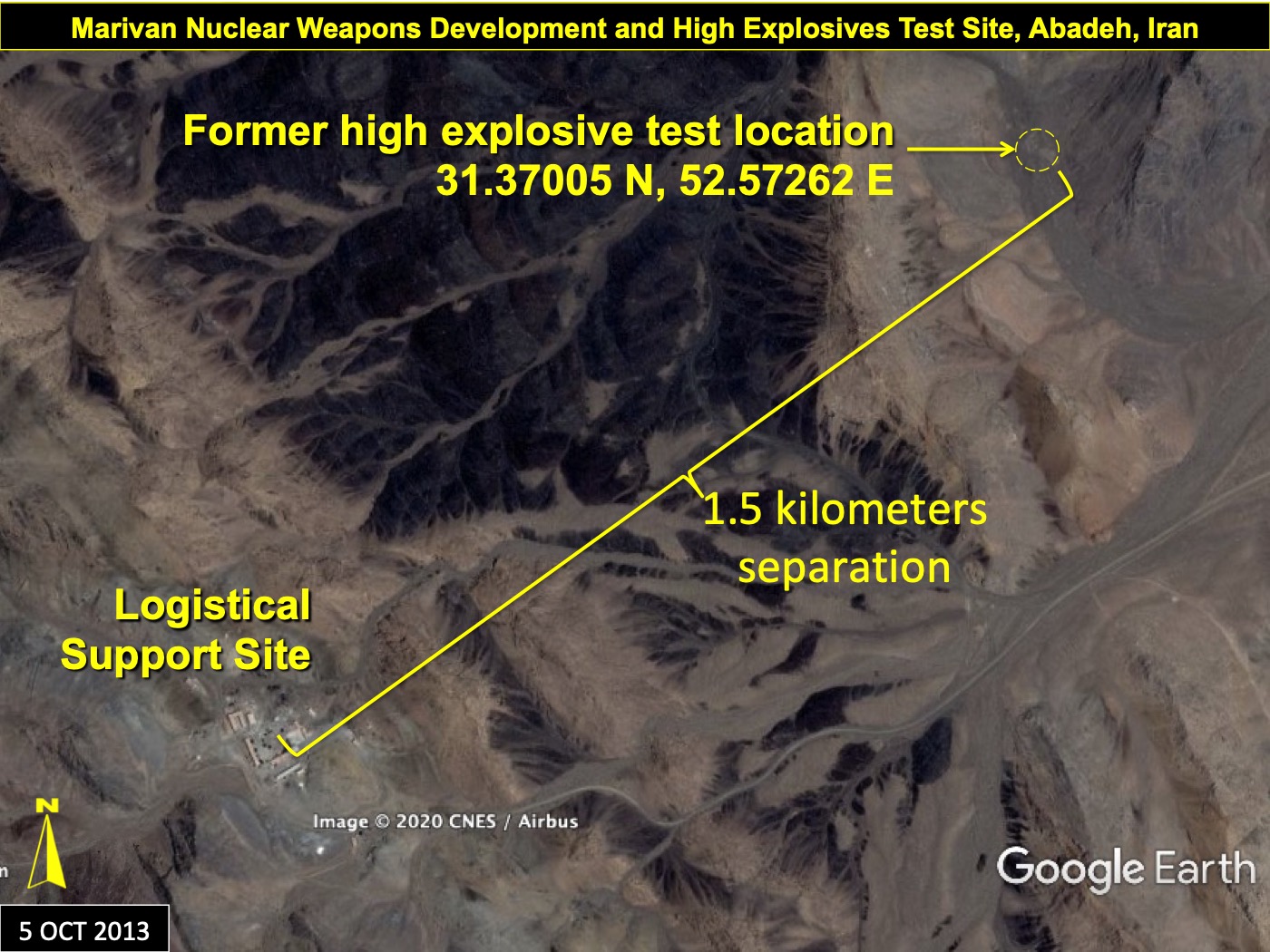
Figure 1. The Marivan high explosive test site and its relative location to the logistical support site.
Introduction
The Amad Plan, Iran’s crash nuclear weapons program in the early 2000s, conducted its larger high explosive tests related to the development of nuclear weapons outdoors at the Marivan site. The site’s location, long unknown to Western intelligence, the IAEA, and the public, is a mountainous region of central Iran, about 24 kilometers north of the town of Abadeh. Information in the archive shows that the Marivan site undertook work linked to implosion testing for nuclear weapons. It was one of four sites involved in Amad’s testing program related to developing nuclear weapons components. 4 Two of those sites, Sanjarian and Parchin, conducted smaller-scale high explosive tests of nuclear weapons components in specialized chambers, 5 leading up to the larger, more full-scale tests at Abadeh.
The IAEA discussed the Marivan site, without revealing its name, in a June 2020 report alleging Iran’s undeclared nuclear material and activities, describing this site as one “where outdoor, conventional explosive testing may have taken place in 2003, including in relation to testing of shielding in preparation for the use of neutron detectors.” 6 The IAEA also emphasized that part of this site had been razed in July 2019. Between the end of Amad and up until the razing of the logistical support site, the Marivan development site, including the nearby high explosive test location, had changed little, suggesting continued use of the site or an intention to reactivate it at some point until its discovery by Israel, which, as was likely also expected, resulted in a subsequent IAEA enquiry. That Marivan remained intact for so long also allowed evaluations with post-2003 satellite imagery.
The location of the Marivan site was first made public on September 9, 2019, by Israeli Prime Minister Benjamin Netanyahu, who revealed at a press conference the existence of this previously clandestine nuclear weapons development site. However, he did not at the time identify the site as the Marivan site and he did not show the actual location of the nearby high explosives test site, where major high explosive tests were done; he merely announced it as a site connected to the Amad Plan engaged in conducting “experiments to develop nuclear weapons.” 7 The Prime Minister went on to say that once Iran became aware of Israel becoming witting to the existence of the site, the Iranians quickly destroyed the site in July 2019. Figure 2 is taken directly from the Prime Minister’s presentation, showing the logistical support site before and after its razing.
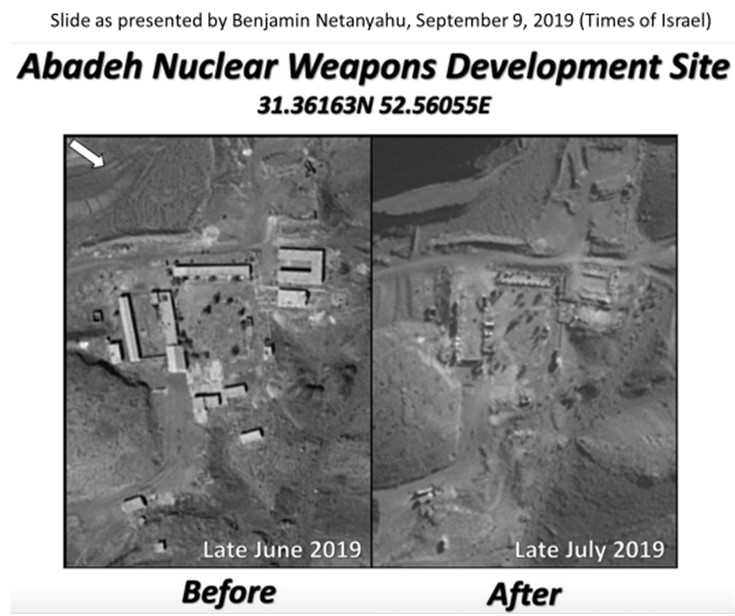
Figure 2. Prime Minister Netanyahu used these before and after pictures of Abadeh to show the logistical support site’s abrupt razing in July 2019.
Nuclear Archive
The Nuclear Archive contains extensive information about the Marivan site. The information includes ground photographs and descriptions and results of nuclear weapons-related testing. In particular, the archive shows that the Amad Plan’s nuclear weaponization effort, Project 110, used the Marivan site to conduct tests of large scale hemispherical multi-point initiation (MPI) systems, including one such test in 2003 known to the IAEA and other ones unknown previously to the inspectors. The archive indicates that the site was used for several experiments, and can now be identified as one of four sites previously engaged in nuclear weapons component testing. 8 During one two-month period, between February 20 and April 20, 2003, based on an Iranian document from the archive, four tests under Project 110 were conducted at Marivan. 9 This document covers a seven month period, reporting the number of tests per month at each site, with the tests at Marivan occurring only in the last two months of this period, while high explosive tests were happening in Sanjarian’s and Parchin’s high explosive test chambers throughout this period. Although testing likely continued after this period, it suggests that in terms of testing nuclear weapons components, the Marivan site tested nuclear weapons components closer to full-scale, involving greater amounts of high explosives than was possible in the indoor explosive chambers at Parchin and Sanjarian. 10
The archive information also suggests that Marivan was the designated Amad location for conducting a cold test, the testing of the assembled nuclear explosive device without weapon-grade uranium. This critical test could determine that the nuclear explosive device would work when outfitted with nuclear explosive material and a neutron initiator, typically the last test before building the nuclear weapons, or at least a prototype of a nuclear weapon. Although a cold test avoids the use of nuclear explosive material, it would still likely involve the presence of nuclear material, namely natural uranium as a surrogate material for the weapon-grade uranium.
A cold test is also suggested by the IAEA reference to the explosive testing of shielding for neutron detectors, equipment critical to determine the success of the firing of the cold device, in particular detecting neutrons from the neutron initiator. The Institute obtained parts of a Farsi-language slide set from the archive about a Marivan test, showing the preparation and aftermath of a test, comprised of a MPI and main high explosive charge. According to the archive information, the purpose of this large-scale experiment was to test the ability of the neutron detectors to survive sufficiently long after the explosion of a partial nuclear device in order to measure the neutron flux under the conditions of a planned cold test. This test is apparently what the IAEA refers to in its safeguards reporting.
Overview of Two Main Sections of the Marivan Site
Figure 3, an October 2013 Google Earth perspective view, provides an overview of the logistical support site earlier identified by Prime Minister Netanyahu. The general layout of the site includes a cluster of key buildings hidden behind a hill from view from the main access road, with a security checkpoint at the entrance.
Figure 4 is the earliest available (from 2006) commercial satellite image of the high explosive test site, located northeast of the logistical support site, where outdoor, nuclear-weapons related high explosives tests were conducted. The test site features an earthen mound in front of a graded ramp to hold the various nuclear explosive mock-ups, experimental apparatus, and detector equipment. The tests would be visible to high-speed cameras in a bunker approximately 70 meters uprange (to the northwest). A control bunker is nearby as well, roughly 100 meters from the explosion (detonation) point in the same general direction. The bunkers are difficult to discern in the commercial images scrutinized by the Institute, with one bunker more certain than the other one. Figures 5 and 6 show the bunkers in more detail.
A previous version of this report had identified the possible location of a large-scale high explosive test as being within the logistical support site. New information places the location of that explosion at the high explosion test site 1.5 kilometers further away to the northeast. In fact, the larger high explosive tests were evidently conducted only at this more distant test site rather than anywhere else in the vicinity of the logistical support site for both safety and security purposes.
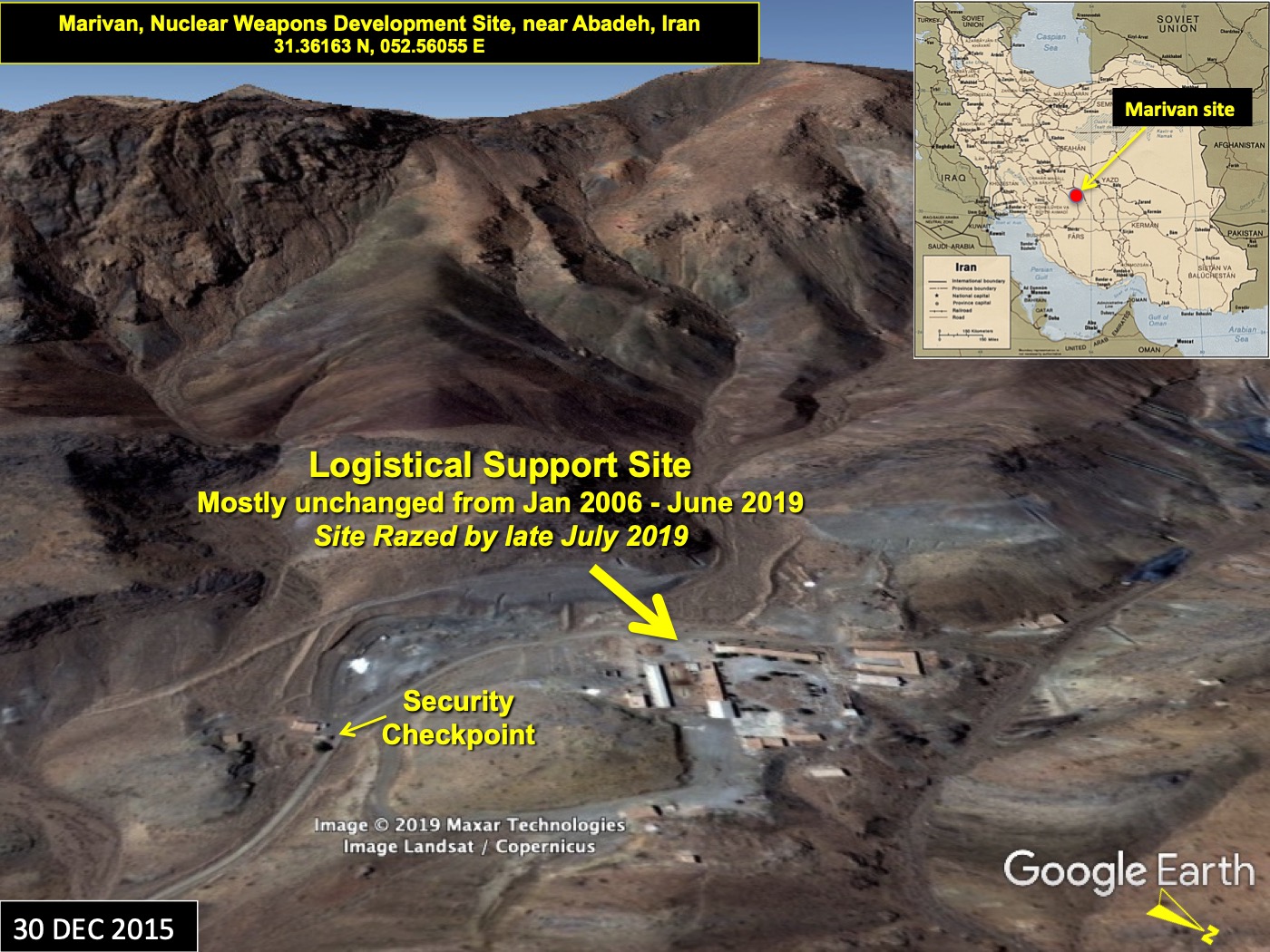
Figure 3. A perspective view of the Marivan logistical support site at Abadeh before razing.

Figure 4. The Marivan high explosives test site near Abadeh, Iran, as it appeared in 2006.
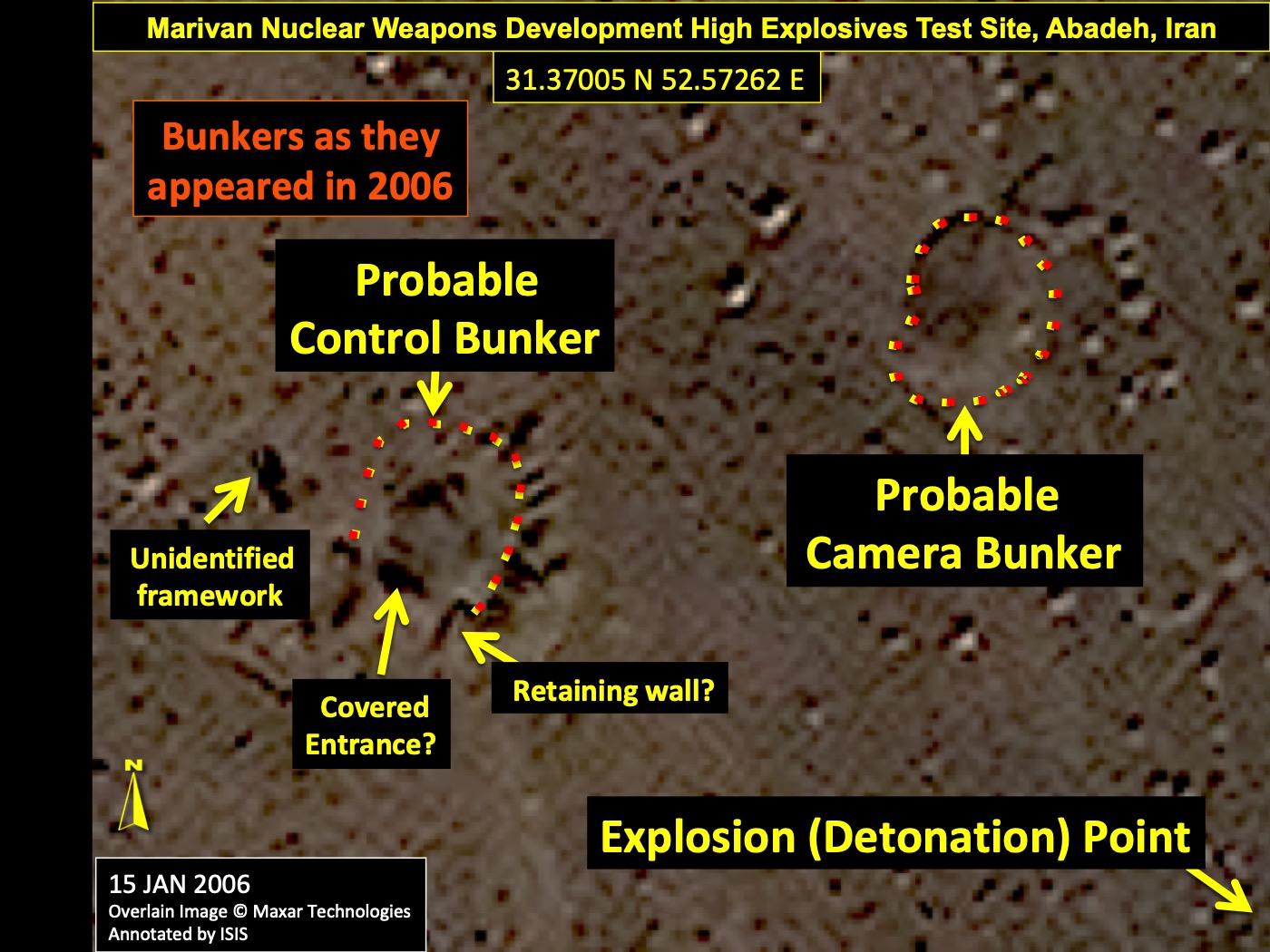
Figure 5. A close-up of the explosives test site associated bunkers as they appeared in 2006, the nearest available high-resolution image in time to the 2003 tests.
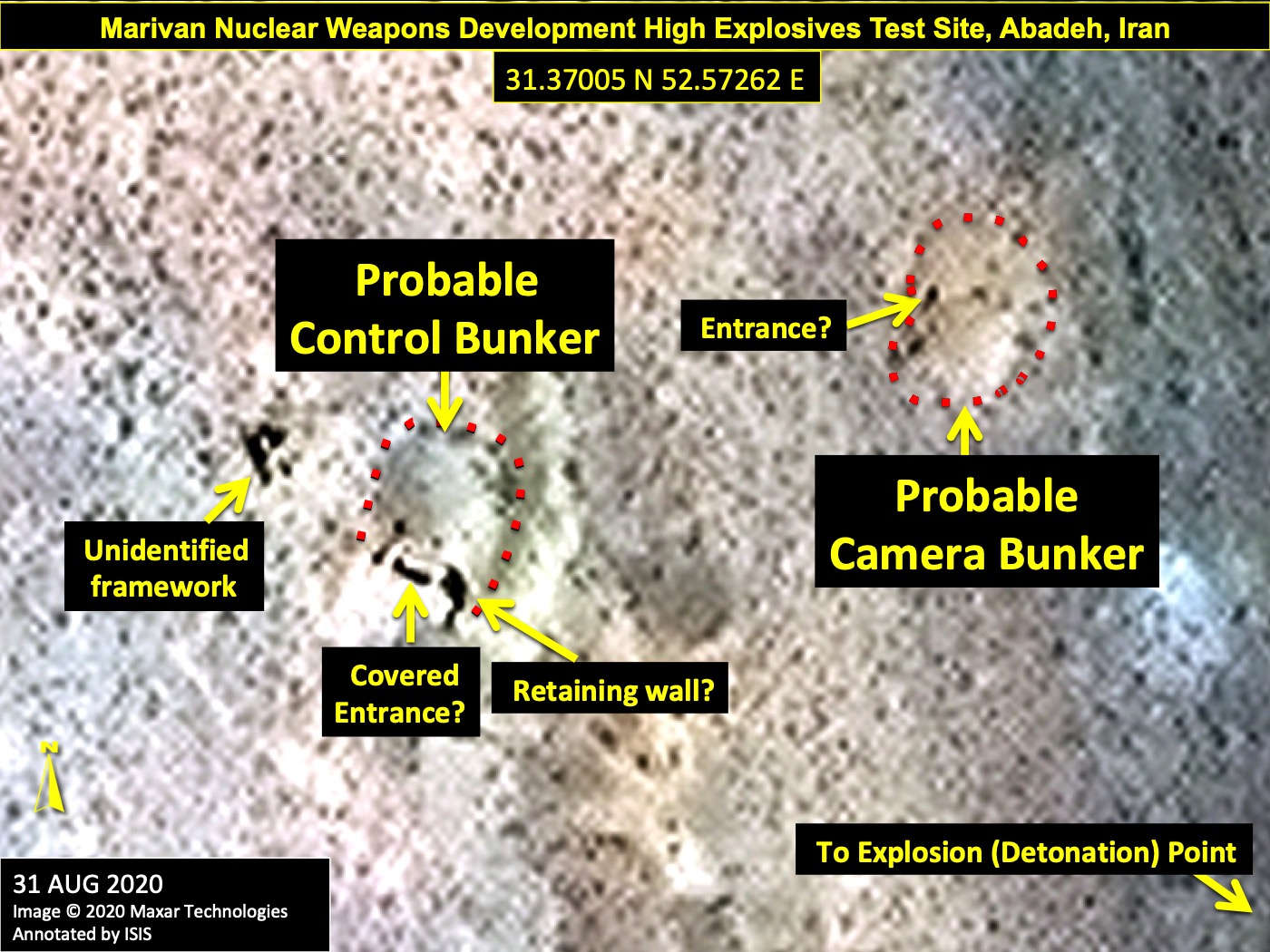
Figure 6. A close-up of the explosive test site associated bunkers as they appear in a high-resolution August 31, 2020, image.
Nuclear-Related Testing at Marivan
Information is publicly available about two tests at the Marivan site. One involves information, at least partially, known to the IAEA before the revelations in the Nuclear Archive; the other depends on documents discovered in the archive.
2003 MPI Test at Marivan
Prior to the seizure of the Nuclear Archive, information became public about a large-scale hemispherical multi-point initiation test in 2003 at Marivan. 11 And even before that, prior to 2011, a member state had shared information with the IAEA that describes this experimental setup, which aimed to measure the time of arrival of the detonation front, 50 kilograms of Composition B explosives in the form of a shell placed inside a hemispherical shock generator system. (The shock wave generator is a multi-point initiation system, which has the purpose of uniformly initiating a spherical shell of high explosives, or the “main charge,” which in turn compresses the nuclear core made from weapon-grade uranium to achieve a supercritical mass for a nuclear explosion. 12) The time of arrival of the detonation front at the outer surface of this 50 kilograms shell of explosives was measured by using many hundreds of fiber optic cables drilled into a thin hemispherical shell or holder in close proximity of the inner surface of the explosives. The other end of each of the cables was attached to a panel. The light signals were then transmitted via air to a fast-acting camera with a rotating mirror, likely a framing camera, at a safe distance from the explosion. On firing, the exploding bridgewires ignited the PETN explosives in the channels of the shell, setting off the explosive pellets in the holes in the shell (shock wave generator), in turn initiating the outer surface of the Composition B shell. The detonation front traveled through the main charge and on exiting the inner surface produced light, which was transmitted via the fiber optic cables and was captured on the film of the high-speed camera.
This description with less detail is in the 2011 IAEA report:
Information provided to the Agency by the same Member State referred to in the previous paragraph [not included here] describes the multipoint initiation concept referred to above as being used by Iran in at least one large scale experiment in 2003 to initiate a high explosive charge in the form of a hemispherical shell. According to that information, during that experiment, the internal hemispherical curved surface of the high explosive charge was monitored using a large number of optical fibre cables, and the light output of the explosive upon detonation was recorded with a high-speed streak camera. It should be noted that the dimensions of the initiation system and the explosives used with it were consistent with the dimensions for the new payload which, according to the alleged studies documentation, were given to the engineers who were studying how to integrate the new payload into the chamber of the Shahab 3 missile re-entry vehicle (Project 111). 13
There is one publicly available photograph from the archive that apparently shows a model of this experimental system using optical fibers (Figure 7). This model shows a hemispherical object representing the external side of the multi-point initiation system, where inside would be the high explosives and an inner surface, or holder, where the fiber optic cables would connect. The fiber optic cables exiting the hemisphere and the panel can also be seen. Only one detonator is needed to initiate this MPI system, or shock wave generator, reflecting the significant contribution of Danilenko’s work to Iran’s nuclear weapons program. (The archive contains many images of actual hemispherical configurations for this type of test as well as other hemispherical high explosive tests related to developing implosion-based nuclear weapons. However, those images, in addition to a considerable amount of other information, were judged as nuclear weapons-sensitive and not made public by Israel.)
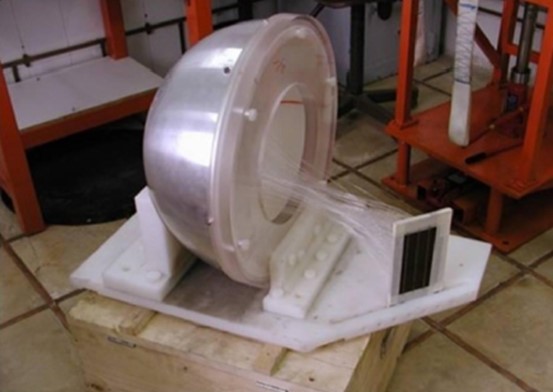
Figure 7. Model of an experimental system in the Nuclear Archive representing what appears to be a shock wave generator and high explosives, with a diagnostic system using fiber optic cables, to measure time of arrival of a detonation front in the main charge.
The IAEA also highlighted V.V. Danilenko’s involvement in this initiation system and diagnostic equipment in its 2011 report. (Danilenko also played other important roles that aided the Amad Plan, in particular the high explosive chambers at Parchin. 14) According to the IAEA:
The Agency has strong indications that the development by Iran of the high explosives initiation system, and its development of the high speed diagnostic configuration used to monitor related experiments, were assisted by the work of a foreign expert who was not only knowledgeable in these technologies, but who, a Member State has informed the Agency, worked for much of his career with this technology in the nuclear weapon programme of the country of his origin. 15
The IAEA recognized that the diagnostic system used in this MPI test is similar to one Danilenko presented in two papers in the early 1990s at a conference on high-speed photography and photonics. In their papers, Danilenko and his colleagues from the Federal Nuclear Center, the All-Russian Institute of Technical Physics (VNIITF), presented an optical technique in which fiber optic cables are used to capture the time of arrival of an explosive shock wave on a fast camera. 16 VNIITF was created as a back-up facility for the All-Russian Scientific Research Institute of Experimental Physics (VNIIEF) and contained expertise in the entire spectrum of work connected with the design and development of nuclear weapons. Figure 8, below, shows a schematic from one of Danilenko et al’s papers that shows the basic structure of this system, illustrating it with one fiber optic cable labeled “light guide”. In actuality, there would be hundreds.
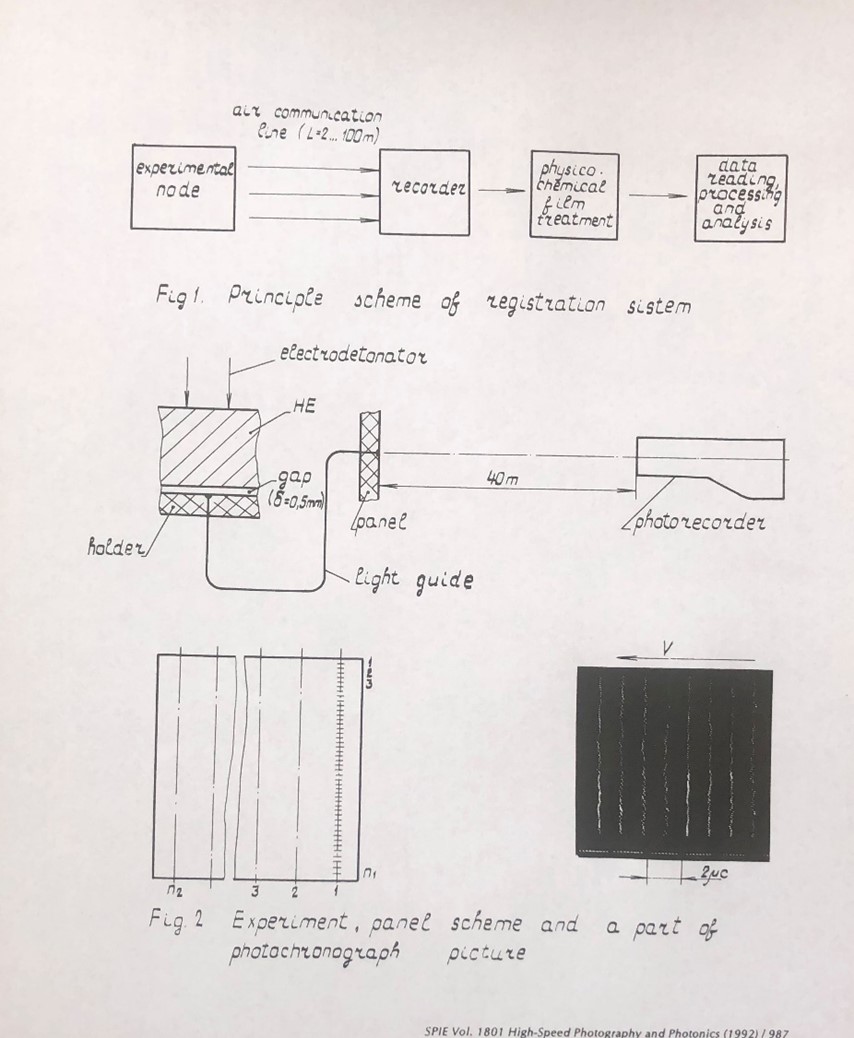
Figure 8. Schematic from Danilenko et al.’s report on a fast, fiber optic diagnostic system. “Electrodetonator” is another name for a shock wave generator. Note the lines on the photo from a raster system. As can be seen, the camera is placed at a safe distance of 40 meters from the explosion. Reprinted from: “Multichannel optical fiber system to measure time intervals in investigations of explosive phenomena,” see footnote 15.
Testing the Survivability of Neutron Detectors
Another test at Marivan was revealed by the IAEA, based on information in the Nuclear Archive, an experiment testing the ability of shielding to protect neutron detectors during an explosion. The Nuclear Archive has a slide show, titled “Marivan Test Results,” serving to report on a test at the high explosive test site aimed at determining the ability of neutron detectors to withstand the blast long enough to measure the neutron flux emitted from the neutron initiator at the center of a mock nuclear explosive device, e.g. during a cold test. Although this test appears to have been a more primitive test than the MPI test described above, it is a test expected to be conducted closer in time to a cold test, meaning the test puts Iran even closer in chronology to a future cold test.
Figure 9 is a slide from this archive slide presentation, where the caption reads, “Figure 18, The positioning of the detector on its base and its placement behind the shield.” The photo in the center of the slide is a ground image, showing a white rectangular case, that would contain neutron detectors used in a cold test. The detector panel is situated behind a metal (steel) plate, which serves as its shielding against the immediate blast from the detonation on the opposite side of the plate.
Figure 10 shows the pre-test set-up of the metal plate at the outdoor testing area, near what is labeled in Farsi as the “explosion point” (aka “detonation point”).
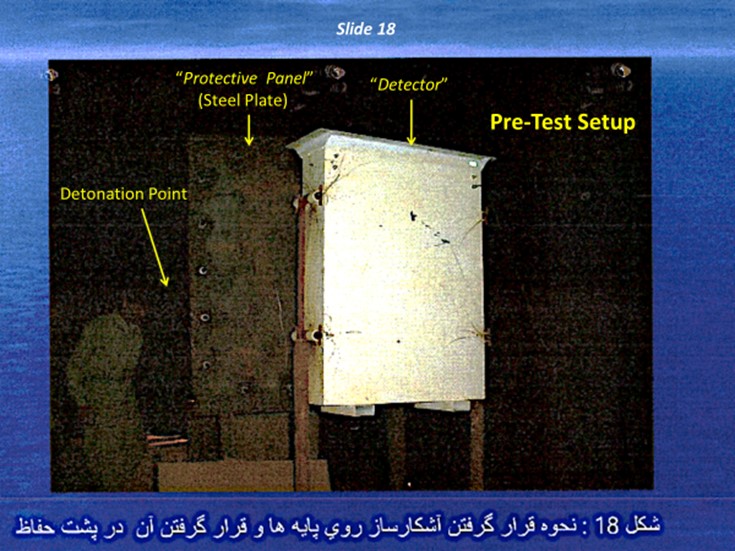
Figure 9. A slide from the archive slide presentation, “Marivan Test Results.” The caption reads, “Figure 18, The positioning of the detector on its base and its placement behind the shield.” The slide is part of a slide set from the Iranian Nuclear Archive, translated by the Institute. The white case in the foreground would contain the neutron detectors. English translations and annotations by the Institute.
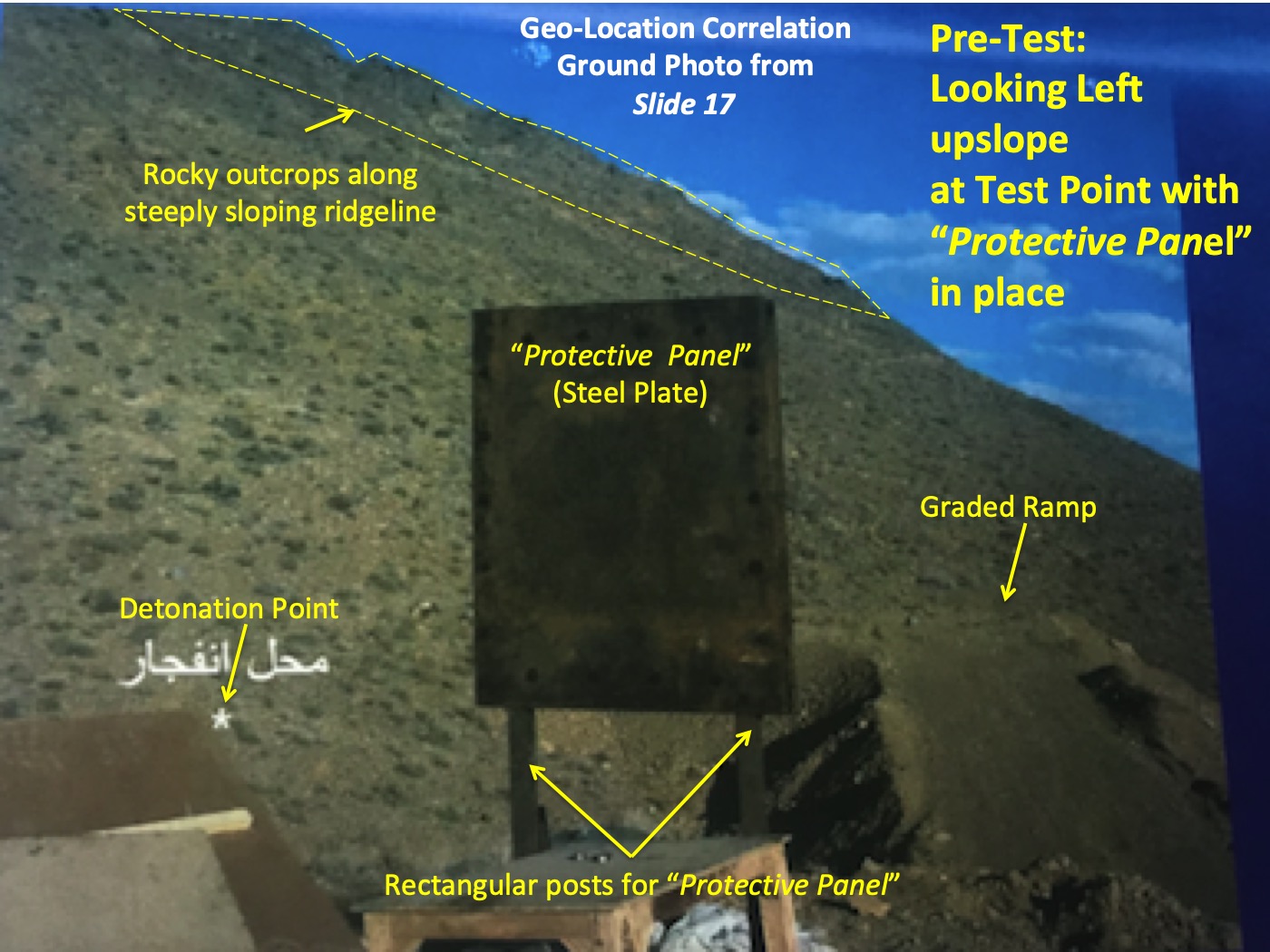
Figure 10. A close up of the photo in slide 17 of the Nuclear Archive slide set titled “Marivan Test Results.” The caption of the slide (not shown) reads “The location of the explosion and the positioning of the metal shield (protective panel) in front of it.” The white Farsi annotation in the photo labels the “explosion point”, marked by an asterisk. English translation and annotations by the Institute.
Additional ground photos from the slide presentation show the aftermath of the explosion and the impact of the blast on some of the equipment, including on the metal (probably steel) plate, which is bent inwards after the explosion. Figure 11 is a slide showing remnants of the detector housing and other equipment blown as far as 9 meters in one direction, and 12 meters in another direction. Some of these additional ground images were used to corroborate the precise geo-location of the testing area in Google Earth beyond that of our previous attempted terrain matching effort. Figure 12 shows that the blast deformed the shielding three centimeters inward. Figures 13 and 14 show the remnants of the detector’s casing base and damage to the detector casing
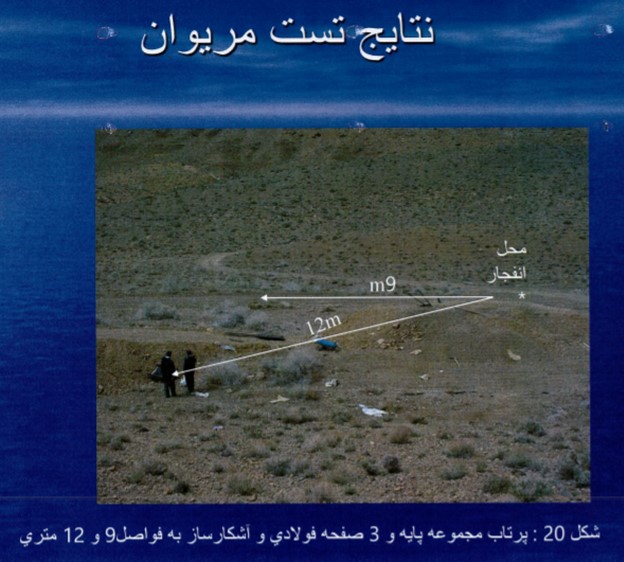
Figure 11. Slide 20 of the Nuclear Archive slide set titled “Marivan Test Results.” The caption reads, “The throwing of the set of the base and three steel plates and detector to the distances of 9 and 12 meters.”

Figure 12. An image from the archive presentation, “Marivan Test Results,” showing the displacement and deformation of the panel from the explosion.
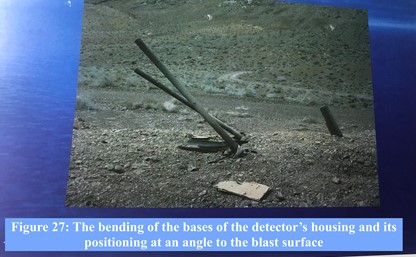
Figure 13. Another image from “Marivan Test Results,” with translation superimposed, showing the bending of the bases of the detector’s housing.
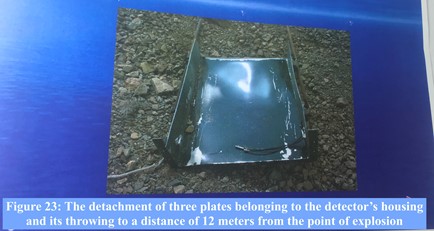
Figure 14. Another image from “Marivan Test Results,” with translation superimposed, showing damage to the detector housing from the blast.
Figure 15 provides an updated geo-location of the Marivan nuclear weapons development high explosives test site, which in addition to the terrain similarities that we reported earlier, keys on the unique shape of the graded ramp (a bulldozed pile of earth) located upslope from the detonation point. Figure 16 is a close-up of that graded ramp with its unique identifying bend to the left looking upslope. Figure 17 shows the ramp in relation to the probable control and camera bunkers.
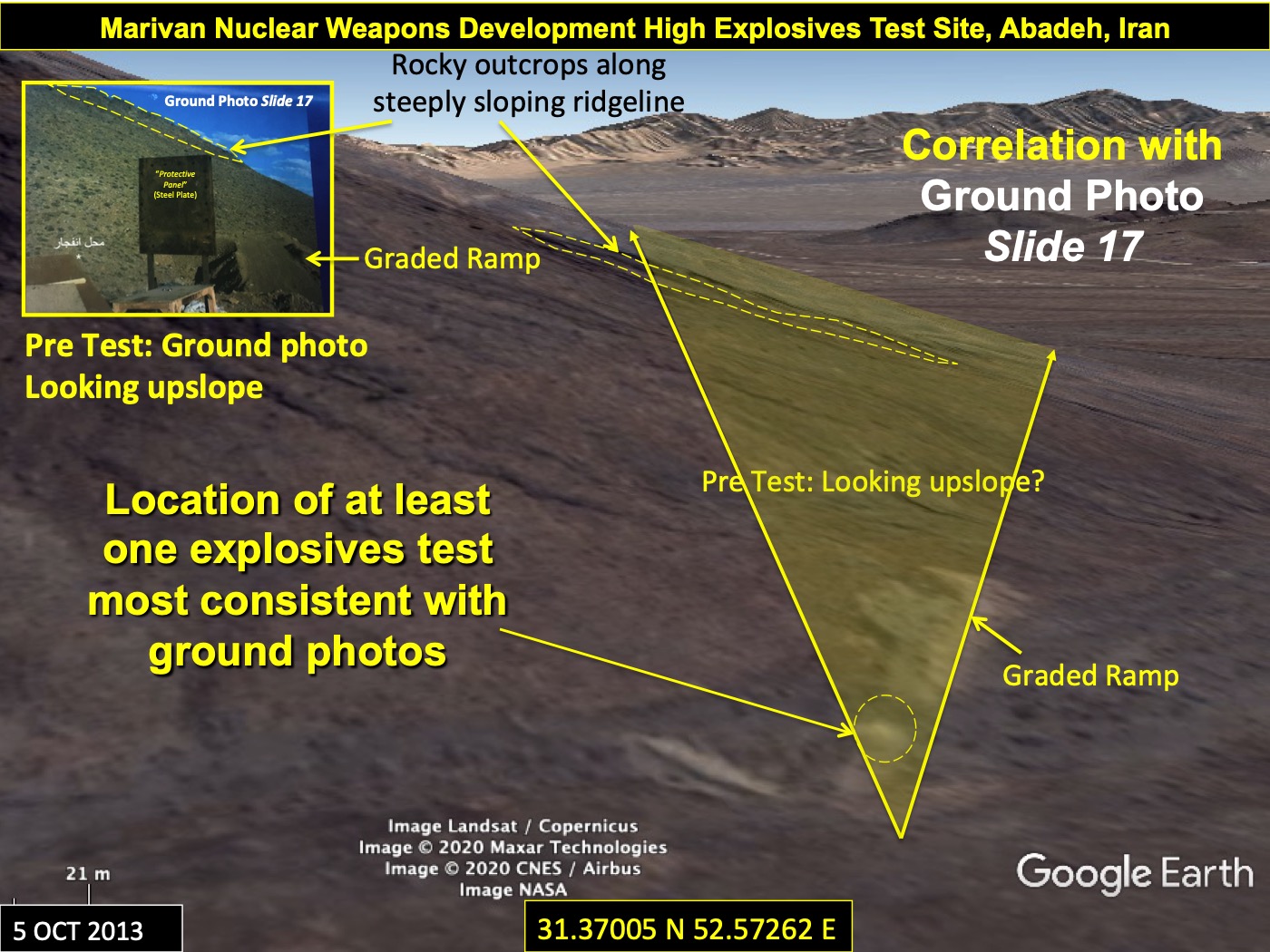
Figure 15. New correlation of the pre-test set-up archive ground photo, looking upslope, with a Google Earth satellite image perspective view.
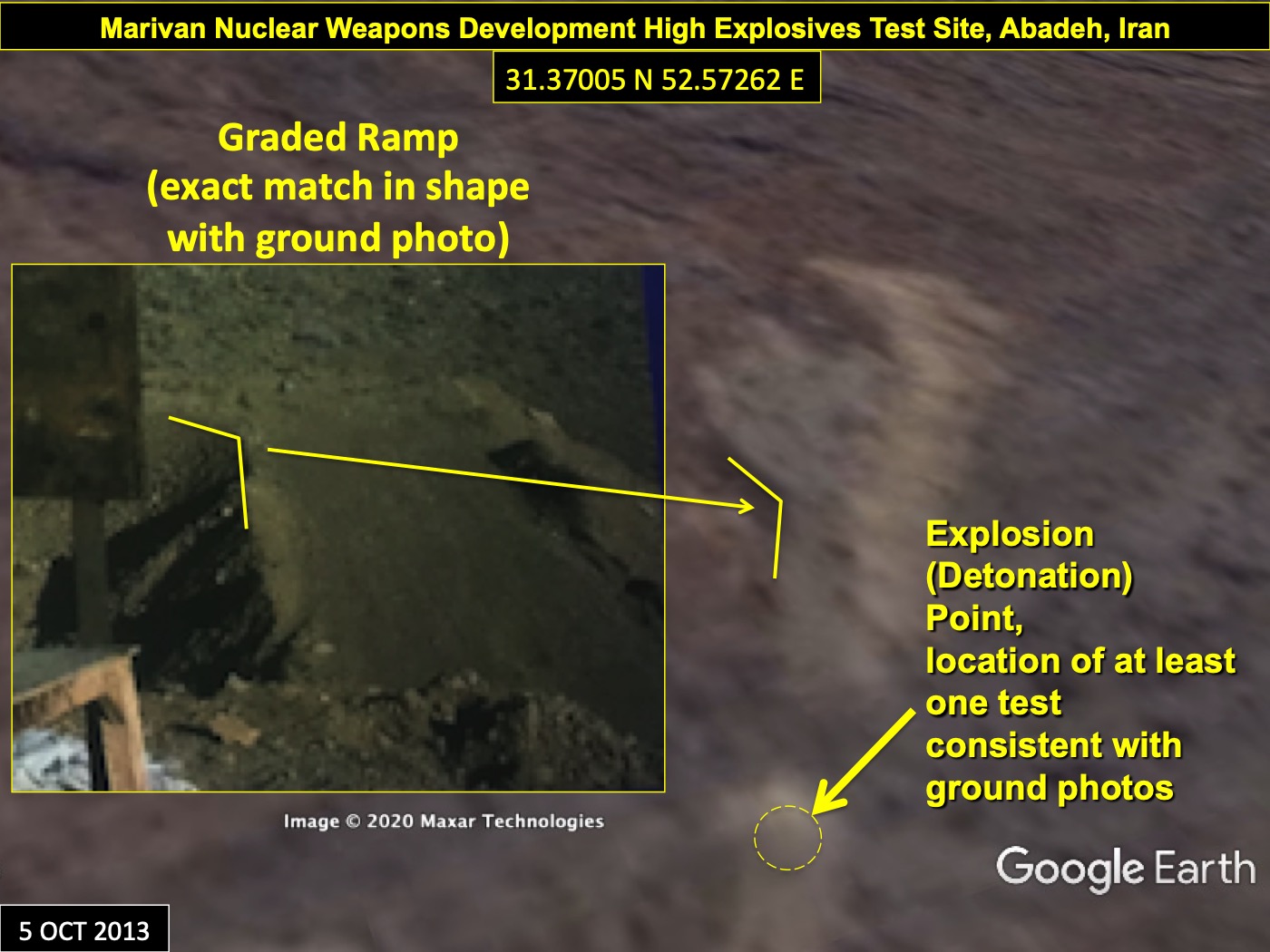
Figure 16. Close-up correlation of the graded ramp on satellite imagery showing the distinctive bend to the left on one side of that ramp.
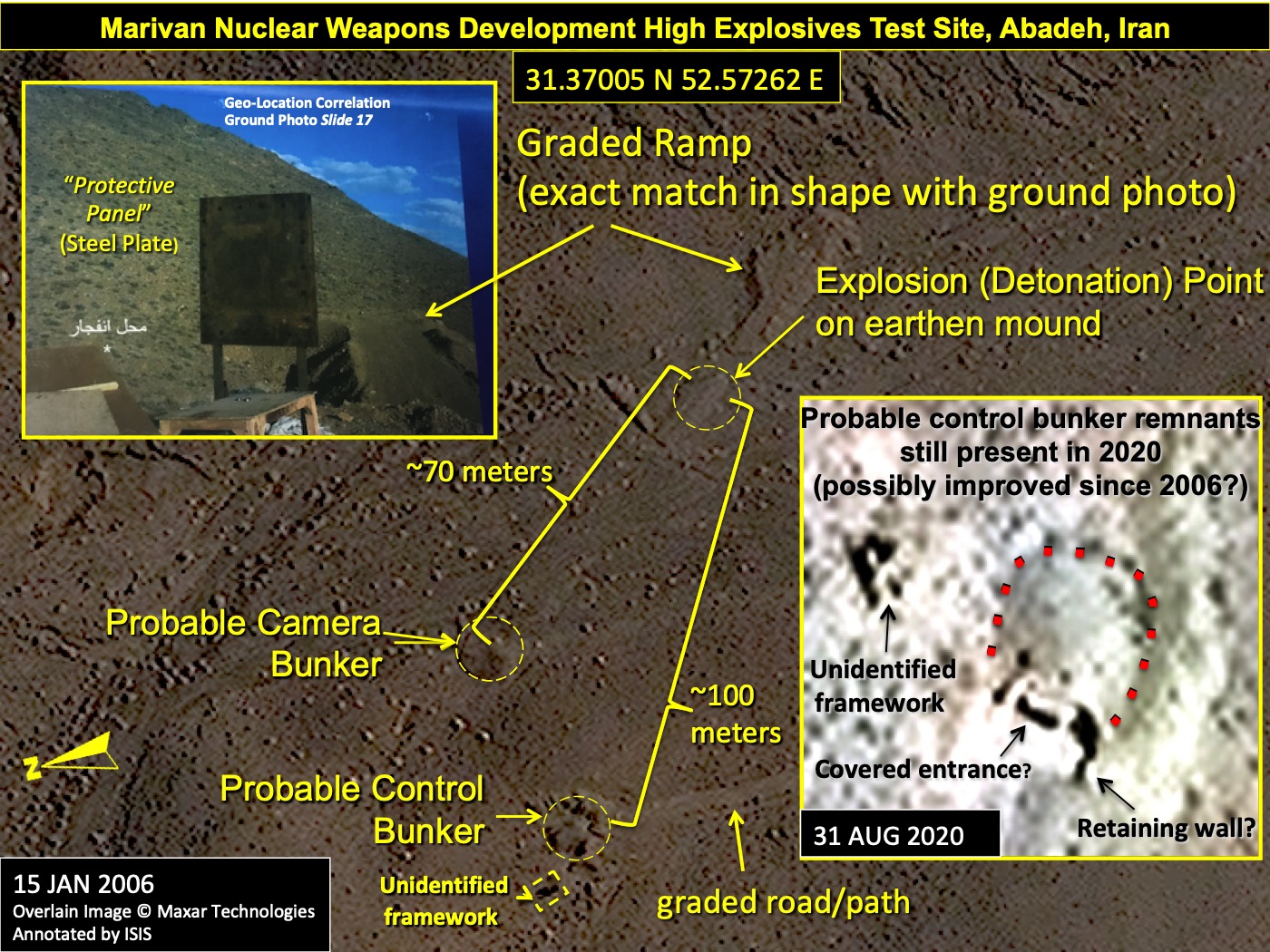
Figure 17. A 2006 image of the test site at Marivan used for large-scale nuclear weapons-related testing in 2003, located roughly 1.5 kilometers northeast of the logistical support site with a ground photo inset from the Nuclear Archive and a recent satellite image inset of the probable control bunker (that could have been renovated post-2006, but due to resolution limitations and varying viewing angles and light and shadow between images, we are unable to verify this possibility).
Post-Amad Activity at Marivan
Post-2003 commercial satellite imagery shows activity at the Marivan logistical support site, suggesting on-going use of the site or its maintenance. Figure 18 shows some personnel tracking in the immediate area post-2016 through 2018 and some new, small structures along the ridge top of the adjacent steeply rising mountain to the east, possibly for improved site security.
Figure 19 shows evidence of recent excavation and digging or ground scraping activity at one of the two identified bunkers at the high explosives test site. This bunker is currently identified as a probable camera bunker, given its direct alignment with the detonation point and its being on the exact opposite side of the detonation from the detector panel given the post-test blast effects. At this site, there is a small rectangular excavation measuring approximately 1.5 x 5 meters in size.
Based on the extant commercial satellite imagery archival record, for at least 14 years (2006-2020), there had been no clearly detectible activity noted at this probable camera bunker. However, sometime between 1 September and 8 September 2020, a small, rectangular excavation was made on the west side of the probable camera bunker, which does not credibly seem to have been part of the onsite inspection activities conducted by the IAEA, which the Institute learned occurred at the end of August. It should also be noted that sometime between 20 and 25 October, some new apparent additional digging/ground scraping was newly visible just northeast of that excavation on part of the probable camera bunker. If the IAEA was only in the area of Abadeh in August 2020, then it would seem that any more recent excavation/digging/scraping activity could not have been done under IAEA supervision.
At this time, we are unable to determine the purpose behind either of these two recent apparent earth-moving activities.
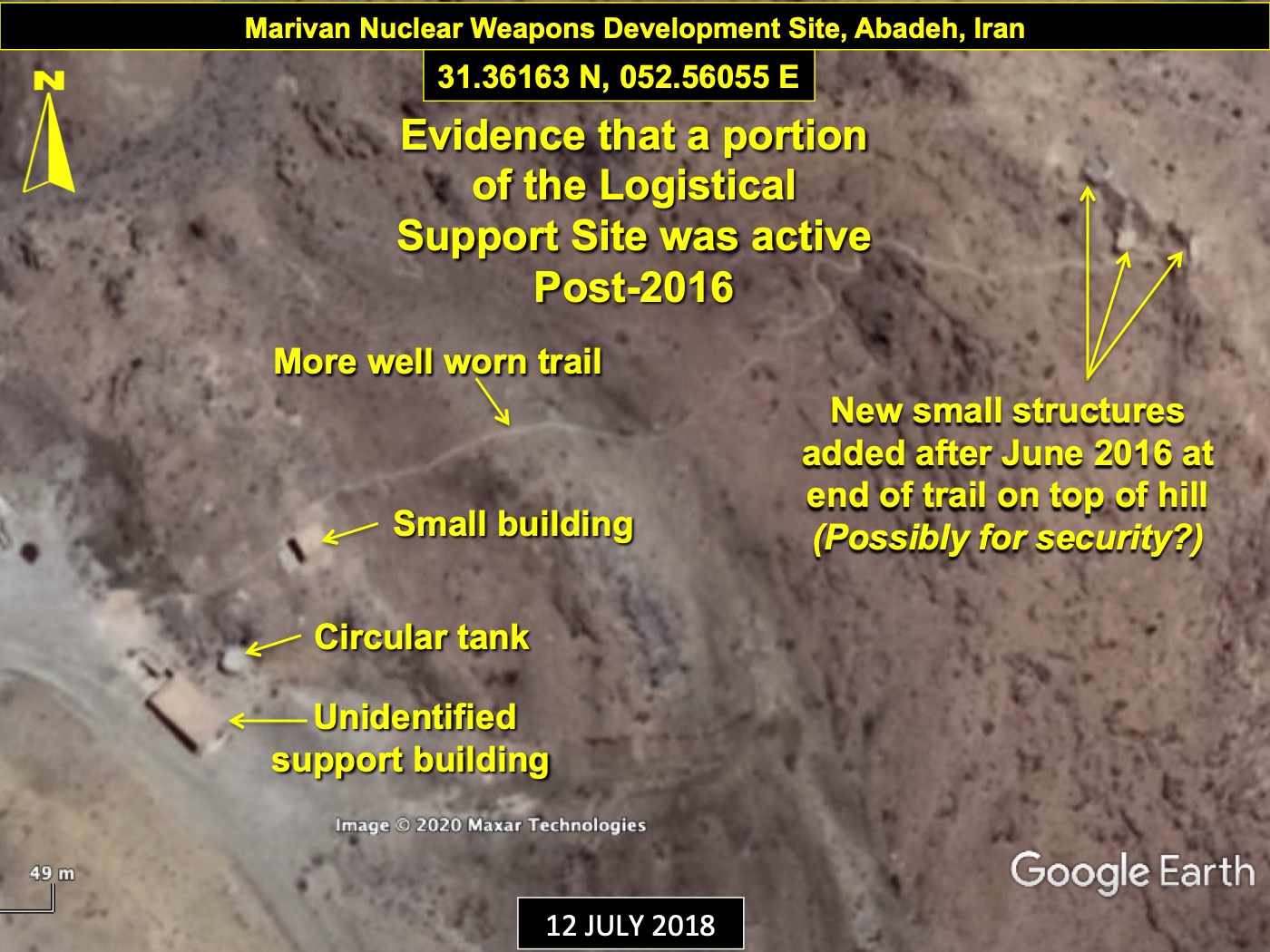
Figure 18. A 2018 Google Earth image shows a previously faint trail well worn, as well as structures not visible in a June 2016 image, indicating at least light activity at the logistical support site as recent as post-2016.
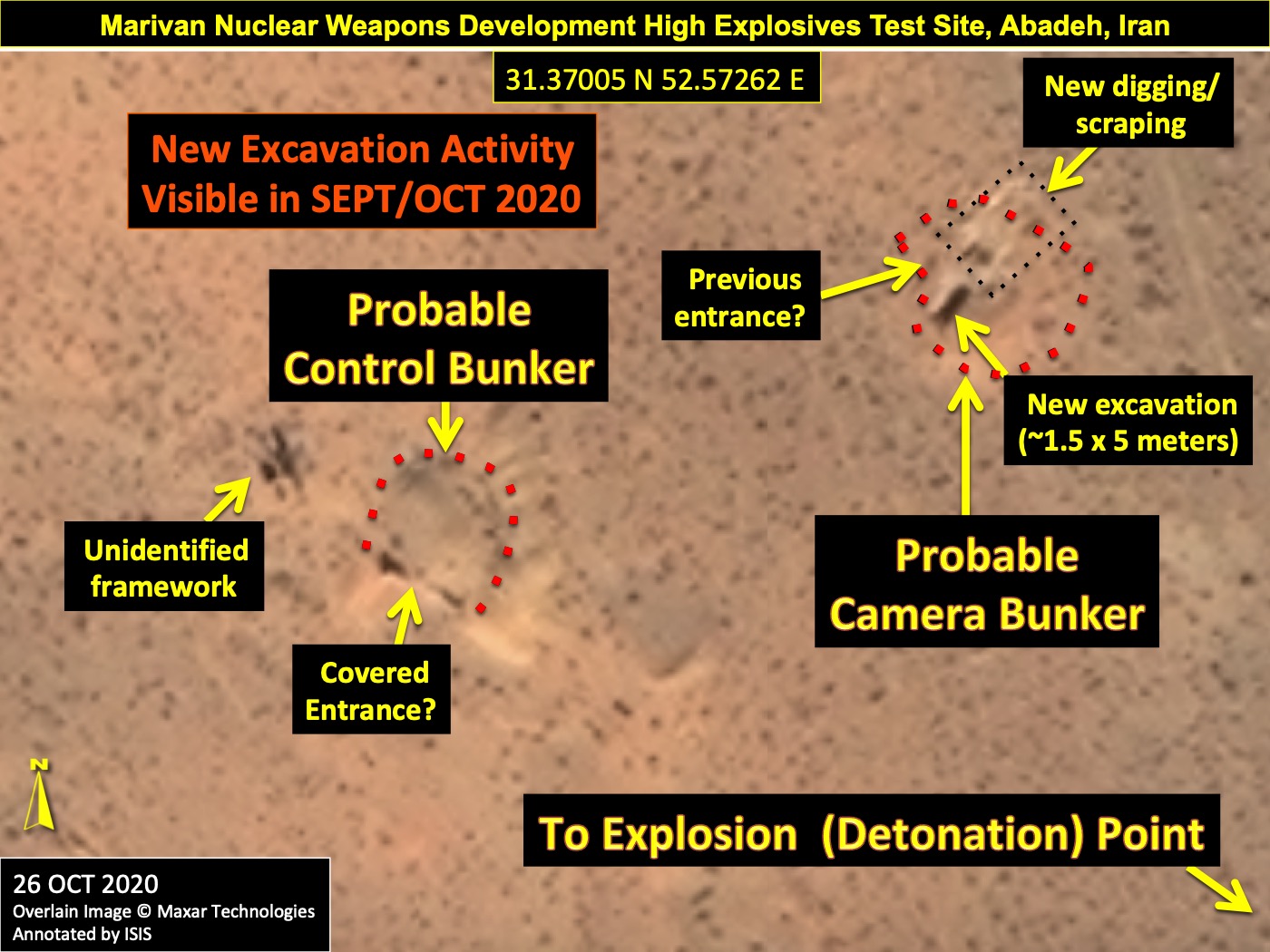
Figure 19. Detected excavation and digging/scraping activity at the probable camera bunker post -August 31, 2020. The purpose of this recent earth moving activity remains unclear at this time.
The IAEA’s Early Struggle to Locate Marivan Is Now Resolved
Putting all the pieces together of Iran’s nuclear weapons efforts is complicated, made more difficult by Iran’s incessant dissembling and falsehoods. Marivan is no exception.
The IAEA had initially published erroneous information about the location of the Marivan site based on what was then a reasonable presumption that the name was that of a location rather than a project. The 2011 IAEA special report17 reported on information supplied by an unnamed member state suggesting that the region of Marivan (on the western border of Iran) might be the location for large-scale multipoint high hemispherical explosives testing conducted in 2003. That original IAEA information described a specialized test of a multi-point initiation (MPI) system as having occurred “at Marivan”.
Subsequent reporting shows that the IAEA no longer believed that association of Marivan was suggestive of the region of Marivan, but rather that it was the name of a development project as is now confirmed by the Nuclear Archive. 18 According to a 2015 IAEA report: “The Agency has reassessed that this experiment was conducted at a location called ‘Marivan’, and not conducted in ‘the region of’ Marivan [as previously reported].” 19
Evidently the original information received by the IAEA did not contain the site’s location, and initially its location was confused with the region of Marivan, near the Iraqi border, a confusion upon which Iran tried to capitalize, urging the IAEA to inspect the Marivan region on numerous occasions, 20 resulting in the dismissal of the existence of the whole site even by some Western voices in the non-proliferation community, both at the time, 21 and as the Joint Comprehensive Plan of Action (JCPOA) was being finalized in late 2015. 22 For example, Iran appeared eager to allow the IAEA to visit the Marivan region in 2014, when Iran’s Ambassador to the IAEA, Reza Najafi, expressed Iran’s readiness to give the IAEA “one managed access” on a “voluntarily basis” to Marivan, adding “such alleged experiments could easily be traced if the exact site would be visited.” 23 The identification of Abadeh as being the location of “Marivan” was only established after the dissemination of the Nuclear Archive in 2018, and Iran was far less willing to allow a visit.24
It took repeated requests by the IAEA and considerable international pressure, including an IAEA Board of Governors Resolution, before Iran agreed to allow a visit to the Marivan Nuclear Weapons Development Site at Abadeh. While the issue of access is hopefully resolved, the underlying issue of the incompleteness of Iran’s nuclear declaration about Marivan and a host of other sites and activities, all previously dedicated to a covert, and illegal, nuclear weapons program, is far from settled. Moreover, the IAEA has barely scratched the surface of providing assurance that activities conducted at these sites are not continuing elsewhere.
1. David Albright, Sarah Burkhard, Frank Pabian, and Andrea Stricker, “Iran Defies the International Atomic Energy Agency: The IAEA’s Latest Iran Safeguards Report,” Institute for Science and International Security, June 10, 2020 https://isis-online.org/isis-reports/detail/iran-defies-the-international-atomic-energy-agency/ ↩
2. David Albright, Sarah Burkhard, and Frank Pabian, “The Amad Plan Pilot Conversion Site,”
Institute for Science and International Security, November 9, 2020, https://isis-online.org/isis-reports/detail/the-amad-plan-pilot-uranium-conversion-site ↩
3. IAEA Director General, Verification and monitoring in the Islamic Republic of Iran in light of United Nations Security Council resolution 2231 (2015), GOV/2020/51, November 11, 2020. ↩
4. David Albright and Sarah Burkhard, “Intensive Nuclear Weapons Component Testing Campaign during the Amad Plan,” Institute for Science and International Security, March 5, 2020, https://isis-online.org/isis-reports/detail/intensive-nuclear-weapons-component-testing-campaign-during-the-amad-plan/8 ↩
5. More details about the Parchin and Sanjarian sites can be found in: David Albright, Sarah Burkhard, Olli Heinonen, and Frank Pabian, “New Information about the Parchin Site,” Institute for Science and International Security, October 23, 2018, https://isis-online.org/isis-reports/detail/new-information-about-the-parchin-site/8 and David Albright and Olli Heinonen, “Shock Wave Generator for Iran’s Nuclear Weapons Program,” Institute for Science and International Security, May 7, 2019, https://isis-online.org/isis-reports/detail/shock-wave-generator-for-irans-nuclear-weapons-program-more-than-a-feasibil/8↩
6. IAEA, NPT Safeguards Agreement with the Islamic Republic of Iran, GOV 2020/30, June 5, 2020. ↩
7. Raphael Ahren, “Netanyahu reveals site where Iran ‘experimented on nuclear weapons development,” The Times of Israel, September 9, 2019, https://www.timesofisrael.com/pm-reveals-secret-site-where-iran-experimented-on-nuclear-weapons-development/ ↩
8. “Intensive Nuclear Weapons Component Testing Campaign during the Amad Plan.”
↩
9. “Intensive Nuclear Weapons Component Testing Campaign during the Amad Plan.” ↩
10. “New Information about the Parchin Site,” and “Shock Wave Generator for Iran’s Nuclear Weapons Program.” ↩
11. David Albright, Paul Brannan, Mark Gorwitz and Andrea Stricker, “ISIS Analysis of IAEA Iran Safeguards Report: Part II - Iran’s Work and Foreign Assistance on a Multipoint Initiation System for a Nuclear Weapon,” November 14, 2011,
Institute for Science and International Security,https://isis-online.org/isis-reports/detail/irans-work-and-foreign-assistance-on-a-multipoint-initiation-system-for-a-n/ ↩
12. Details about Iran’s shock wave generator can be found in: “Shock Wave Generator for Iran’s Nuclear Weapons Program.” ↩
13. IAEA, Implementation of the NPT Safeguards Agreement and relevant provisions of Security Council resolutions in the Islamic Republic of Iran, GOV/2011/65, November 8, 2011, http://www.isis-online.org/uploads/isis-reports/documents/IAEA_Iran_8Nov2011.pdf ↩
14. “New Information about the Parchin Site.” ↩
15. IAEA Director General, Implementation of the NPT Safeguards Agreement and relevant provisions of Security Council resolutions in the Islamic Republic of Iran, GOV/2011/65. ↩
16. Nicolai P. Kozeruk, V. V. Danilenko, and I. V. Telichko, “Optical fiber gauges for gas-dynamic investigations,” Proc. SPIE 1801, 20th International Congress on High Speed Photography and Photonics (January 1, 1993); doi: 10.1117/12.145759; https://doi.org/10.1117/12.145759; and Nicolai P. Kozeruk, V. V. Danilenko, Boris V. Litvinov, P. P. Lysenko, I. V. Sanin, S. V. Samylov, V. I. Tarzhonov, and I. V. Telichko, “Multichannel optical fiber system to measure time intervals in investigations of explosive phenomena,” Proc. SPIE 1801, 20th International Congress on High Speed Photography and Photonics (January 1, 1993); doi: 10.1117/12.145729; https://doi.org/10.1117/12.145729 ↩
17. IAEA, Implementation of the NPT Safeguards Agreement and relevant provisions of Security Council resolutions in the Islamic Republic of Iran, GOV/2011/65. ↩
18. “Intensive Nuclear Weapons Component Testing Campaign during the Amad Plan.”
↩
19. IAEA Director General, Final Assessment on Past and Present Outstanding Issues regarding Iran’s Nuclear Programme, GOV/2015/68, December 2, 2015, https://www.iaea.org/sites/default/files/gov-2015-68.pdf ↩
20. Iran’s former Ambassador to the IAEA, Reza Najafi said, “Such alleged experiments could easily be traced if the exact site would be visited.” See: “Iran Offers IAEA Access to Marivan Site,” Tasnim News Agency, November 21, 2014, https://www.tasnimnews.com/en/news/2014/11/21/564281/iran-offers-iaea-access-to-marivan-site ↩
21. https://lobelog.com/marivan-the-iaea-faces-a-major-credibility-test/ ↩
22. https://lobelog.com/iaea-most-pmd-claims-groundless/ ↩
23. “Iran Offers IAEA Access to Marivan Site,” November 21, 2014. ↩
24. The ground images were acquired by the Institute on August 26, 2020. ↩

 twitter
twitter